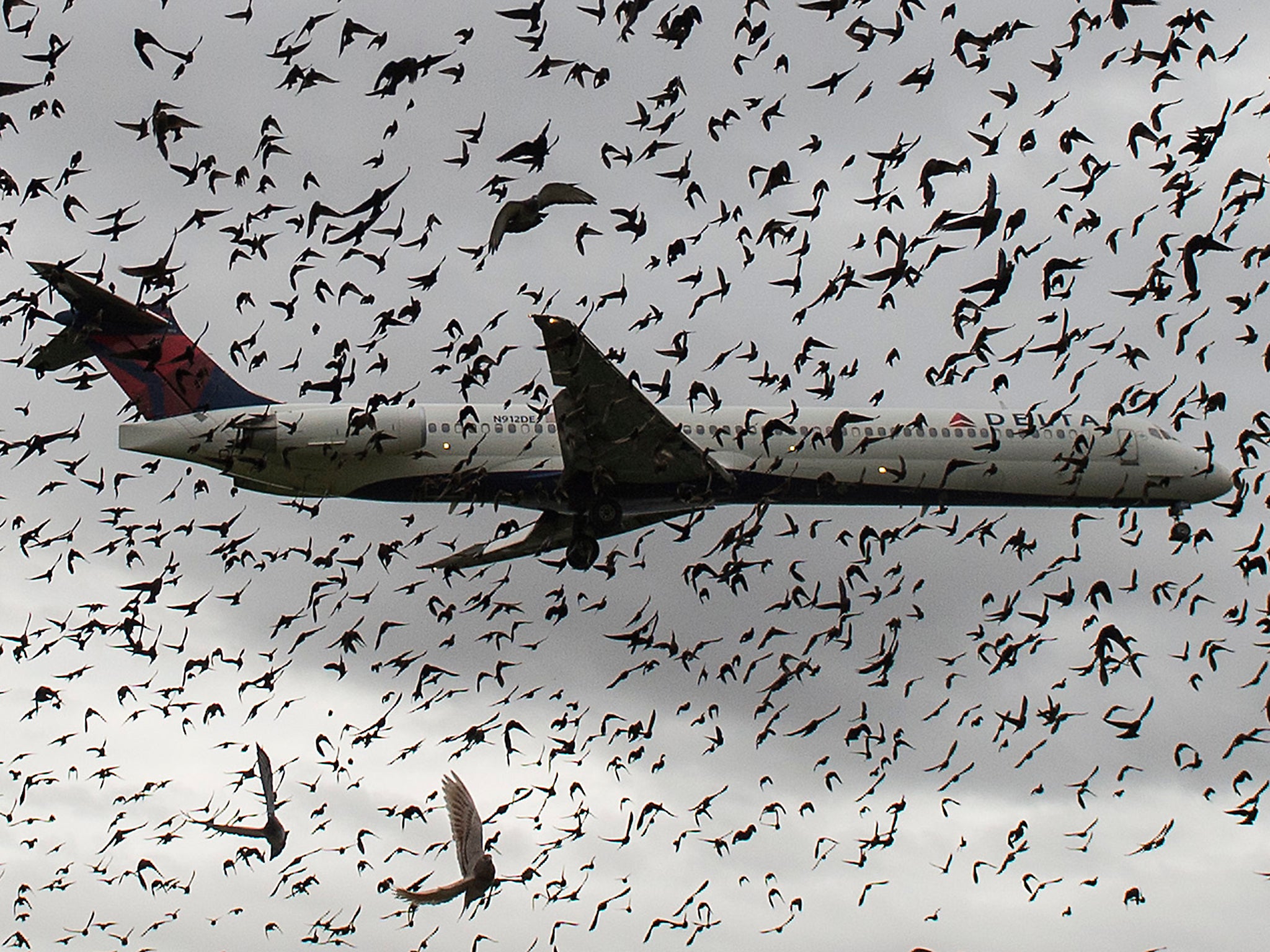What happens when a bird strikes a plane?
It’s not as dangerous as you might think

In bowling, a strike is the best shot you can make. In aviation jargon, however, a strike happens when a bird suddenly crosses the trajectory of an aeroplane. Usually, with an adverse outcome for the bird.
It’s not a rare occurrence for a bird and a plane to collide. A recent Japan Airlines plane bound for New York had to make an emergency landing due to a bird strike, while another plane was forced to return to Cardiff airport in Wales after a bird hit an engine.
In 2016 there were 1,835 confirmed bird strikes in the UK alone – about eight every 10,000 flights. These can have a huge impact on airlines: planes struck by birds have to be carefully inspected for what is known as barely visible impact damage, which may become dangerous if undetected.
Only about 5 per cent of bird strikes result in damage to the aeroplane. However, as a precaution, all struck aeroplanes return to the nearest airport, passengers have to be disembarked and booked onto another flight with a fresh crew – all of which can have a huge impact on the airline’s operations. It is very difficult to figure out indirect costs, but Transport Canada estimates that in North America it tops $500m.
Everybody’s heard about the bird
Birds don’t fly very high. A 2006 study reported that three-quarters of bird strikes occur below 150 metres, when the aeroplane would be in the initial phases of takeoff, or in the final phases of landing. The aircraft’s speed is slower at this point, than it would be at altitude, the landing gear might be extended, and so quick evasive manoeuvres are difficult. The outcome generally depends on the part of the aeroplane that is affected. Aeroplanes are designed to withstand incredible forces, so although engineers are cautious, there is often nothing to worry about.
Plane engines, for example, are designed to be very robust. Certification criteria impose a rule that large engines must withstand a impact with any bird over 3.5kg without any dangerously fast and sharp debris departing from the engine. In fact, most engines can survive a bird ingestion with only minor damage to the blades.
A double engine bird strike is extremely unlikely (although a now famous flock of poor Canadian geese might disagree), but if one engine failed due to a bird strike, it wouldn’t matter. All aircraft are designed to work just fine with an engine out. In fact most are certified to cross half an ocean on a single engine.
It’s not just engines that are at risk, when a bird is stuck, however. Cockpit windows can be hit too. However, these panels are usually made of three layers of laminated acrylic and glass, designed to withstand hail inside a thunderstorm – so a bird is generally not a huge problem. The presence of multiple layers ensures the aeroplane remains pressurised too, just in case the outermost layer gets damaged. In addition, pilots are trained to turn on window heating –- normally used to prevent ice build up at altitude – before takeoff, to make the windows softer and less fragile in case of impact.
Prevention and detection
To make sure that no bird has to suffer such a terrible fate, airports have also been trying various measures to prevent them from even coming close to planes. Predatory bird sound recordings, cartridge scarers – which produce loud bangs and flashes of light – mechanical falcons, trained falcons and drones have all been used. These measures work in the short term, but the common belief is that birds tend to get used to the new disturbance fairly soon. Besides, birds love airports. Lots of green, large empty areas surrounded by trees, and nearby bins are very attractive to wildlife.
Quite often the suggestion that engines should be protected with a grille crops up, but this is not an easy solution. The main issue is that to effectively block the bird at 800km/h, the grid has to be significantly sturdy and thick, but this will disrupt the air flowing into the engine. Engines are efficient because they’re finely designed to exploit the very thin air found at an altitude, so the downsides of a protective grille far outweigh the benefits.
As commercial drones become an increasing concern the industry is calling for systems that tell pilots how severe an impact is, so that they can continue flying if there is no damage. Researchers at Cardiff and Imperial universities in the UK, and others across the world, are working on different sensors and materials that can self-assess plane health, and potentially end the need for disrupted flights.
The idea is to develop a low-power, low-weight, potentially wireless system that detects the location and severity of damage. It may take more than a decade to certify such a system, but ultimately pilots will be informed if it’s safe to continue after an impact. If they have to land, maintenance will know what to inspect, and spare parts will be ready before the plane reaches the airport.
Until then, prevention, design, and thoroughly trained pilots are our defences against bird strikes.
Davide Crivelli is a lecturer in mechanical engineering at Cardiff University. This article was originally published on The Conversation (theconversation.com)
Subscribe to Independent Premium to bookmark this article
Want to bookmark your favourite articles and stories to read or reference later? Start your Independent Premium subscription today.

Join our commenting forum
Join thought-provoking conversations, follow other Independent readers and see their replies